We make traps for flies and midges with our own hands

Summer is the most anticipated time of the year, everything is fine in it, with the exception of harmful insects that wake up in the first warm days. Flies and midges begin to fill the yards and houses, annoying the tenants with their presence. The annoying buzzing is only a minor inconvenience compared to the fact that flying insects carry dangerous diseases and dirt on their paws. The damage from these annoying creatures can be mitigated by using the homemade traps discussed in this article.
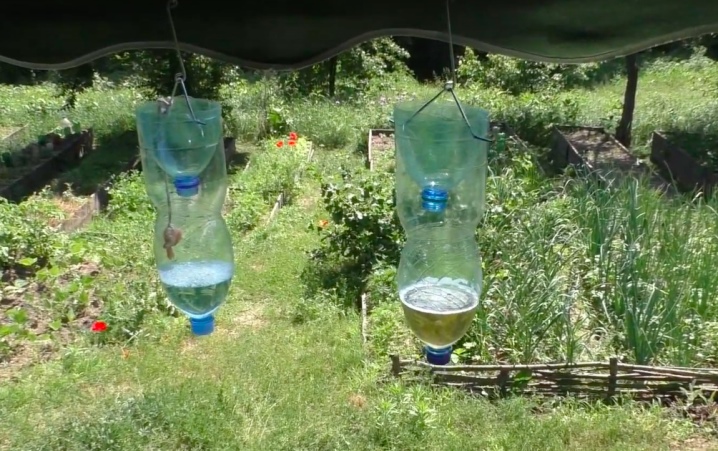
What do you need?
To make a trap with your own hands, you first need to decide on the bait, because each type of winged pest attracts different food. Let's take a closer look at the types of food and the species of flies they attract.
- Vegetable waste. This type of food includes sugar, kvass, honey, beer, spoiled fruits and jam. The smell of rotting food attracts various insects: fruit flies and flies such as fruit flies or honey flies. It is typical for fruit insects to live in flocks in orchards, inhabiting them during the period of fruit ripening. Drosophila is well attracted by fragrant honey and sugar.
- Decaying meat and waste products. The strong, unpleasant odor of decomposition attracts carrion flies and dung flies. These large insects come in a variety of colors: gray, blue, and green. Most often they are found near butchers, in outdoor toilets and cattle buildings. Rotting meat, dung and fish are all suitable baits for calliphorids and sarcophagids.
- Human or livestock blood. Blood-sucking flies include autumn flies, gadflies and horseflies. The period of the greatest activity of such insects is the last month of summer, at which time winged pests, together with mosquitoes and midges, annoy people very much. For blood-sucking flies, an unusual bait is needed - it must exude warmth or body odor.
- Any food. Omnivorous insects include synanthropic flies - they can live in houses and apartments, regardless of the season. They are known to people as house flies or house flies. Any human food can be included in the diet of winged insects: fish, meat, dairy products, sweet and starchy foods. Unlike bloodsucking horseflies, domestic insects cannot bite a person, but they do not hesitate to sit on the skin and lick sweat from it or drink blood from small wounds. A trap for such flies can contain a variety of baits, the main thing is that they must exude an attractive smell.
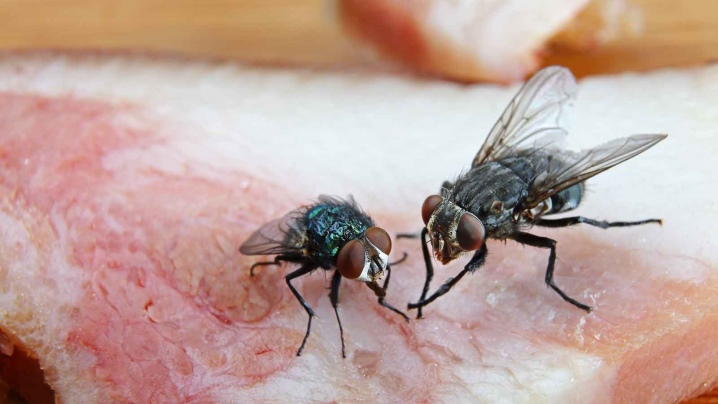
When you have decided on the bait, you need to stock up on material for making a trap at home. The principle of work of homemade traps is always the same: midges easily fly into the trap, but cannot get out. To create a trap for annoying gnats yourself, you can use the most common household items: glasses, plastic bottles, cans, and even ordinary scotch tape.
The choice of material for the trap depends on where you are going to place it: in the bedroom, in the kitchen, or in an outdoor gazebo.
The type of bait will also depend on the location, because no one will like the smell of rotten fish in the apartment.
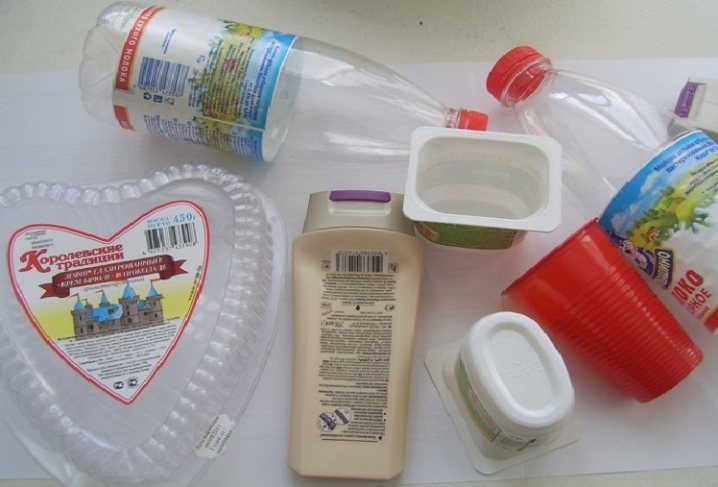
Simple traps
Homemade traps are a great alternative to purchased chemicals and fumigators, which often give people headaches or allergies. Besides, it's always nice to do something useful with your own hands and then watch how it works effectively. The trap located in the house should be compact and not too nasty to smell, and the outdoor bait can be larger and "fragrant" so that gnats and flies draw their attention to it.
Making a trap for annoying buzzing pests is very simple, you just need to follow one general principle of work - the design should be such that flies can easily penetrate the bait and cannot get out of the trap. Let's look at some of the simplest ways to create traps.
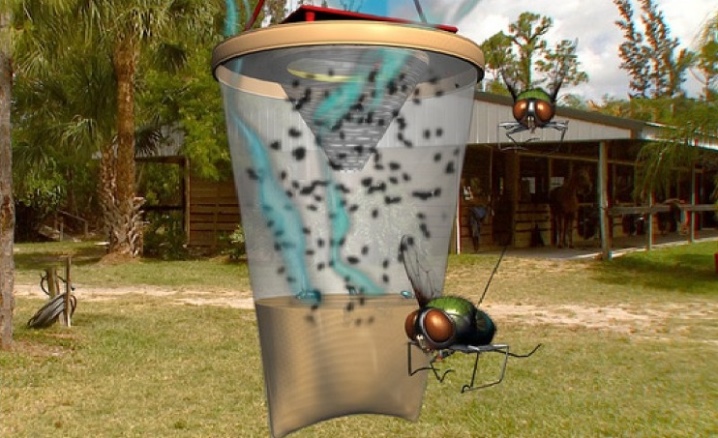
From a plastic bottle
In today's world, nature is plagued by pollution on a global scale from plastic waste, so many people are looking for ways to reuse containers made of such material. Bottles easily become raw materials for the most unexpected things: indoor vases, school crafts and bird feeders. Some types of containers can be recycled, but another way to give a soda container a second life is to make an insect trap out of it.
To make a trap yourself, you will need to prepare the necessary components:
- plastic bottle - trap container;
- scissors or knife - needed to cut the bottle;
- water, sugar, yeast and honey are bait for flies and gnats.


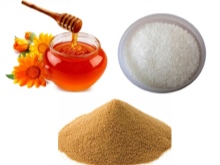
All these items and products are in every home, it will not be difficult to find them. When everything is ready, proceed to making the trap, following simple instructions.
- Using a knife or scissors, cut off the top of the bottle, stepping back from the neck about ¼ of the entire size of the vessel.
- Unscrew the plug - it is not needed. It can be used for some other purpose.
- Collect a small amount of water in the lower part of the future trap.
- Add 1 tablespoon of sugar, 1 teaspoon of honey to the liquid and pour a bag of yeast into it.
- Mix the bait thoroughly until smooth.
- Now take the upper part of the vessel and insert it into the lower half with the neck down - so that it does not reach the aromatic bait (1–2 cm).
- You can additionally wrap the trap in paper, leaving the top open, then it will also become attractive to mosquitoes.
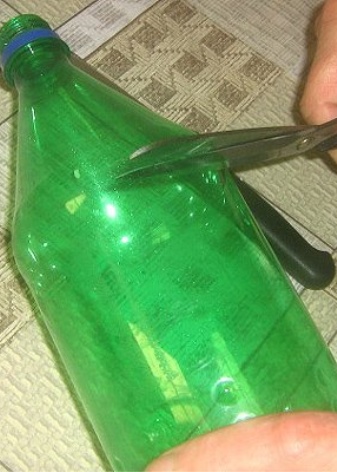
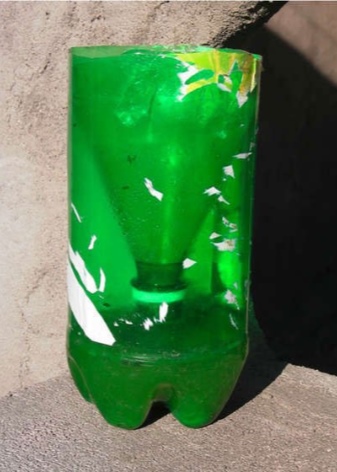
The ready-made trap is quite effective - the wide neck allows even large winged individuals to penetrate the sweet contents. Nevertheless, the small distance to the bait does not allow them to get out - they remain between the upper and lower parts of the vessel or drown in a sticky liquid. To prevent insects inside the trap from buzzing, you can add an insecticide to the solution - then the caught fruit flies, gadflies or flies will die pretty quickly.
A plastic bottle trap has one drawback - if it is knocked over by cats or children, the sticky contents will spill out and stain the room. In order not to regularly wipe the entire apartment with a rag, it is recommended to put the trap in a secluded place.
Alternatively, you can use an alternative bait in the form of spoiled foods such as meat, fish or fruit.
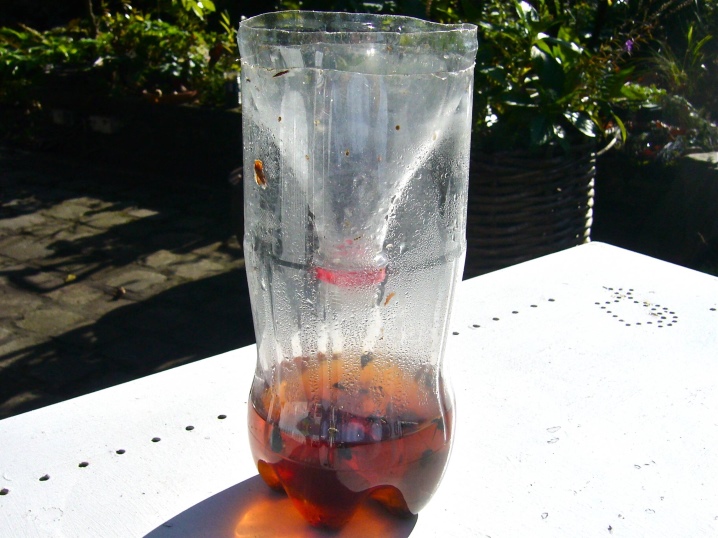
From a glass jar
This type of trap is intended for fruit flies and flies, large insects very rarely fall into such a trap. To make this type of trap yourself, you need a few things:
- a glass jar that will serve as a container for bait;
- a plastic or homemade paper funnel that matches the diameter of the neck of the glass container;
- scotch tape or electrical tape - needed to securely fix the funnel;
- bait in the form of rotting fruit or vegetable scraps.
Making a trap is very simple: place fruits in a jar, insert a funnel into the neck so that the spout does not touch the bait, then secure the product with tape. This design is very convenient - it does not need to be hidden away from animals. If the glass jar is overturned, its contents will not spill out like a gummy solution of water with sugar and honey.In terms of efficiency, a jar with a delicacy is still lower than a trap from a plastic bottle - a lot of small midges penetrate the fruit through the funnel, but gadflies and horseflies very rarely pay attention to the jar. During the day, a simple bait can attract no more than 3-4 flies.
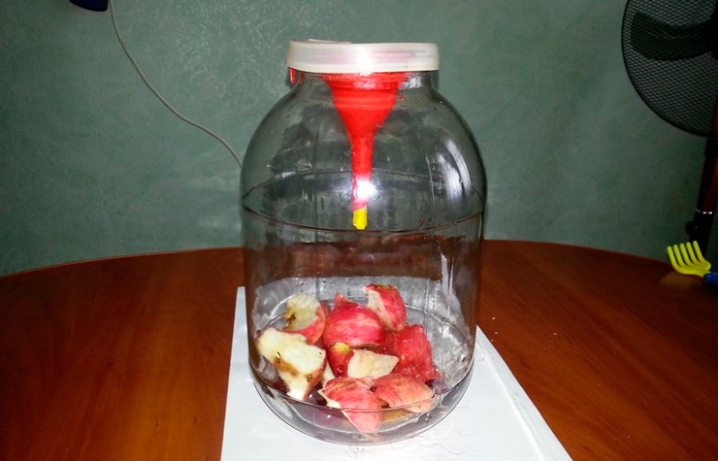
From a plastic container
This option is great for catching fruit flies and small flies, because the trap involves creating small holes into which only small individuals can penetrate. To make a trap you will need:
- deep container or plastic cup;
- cling film;
- some jam.
The method for making the trap is extremely simple.
- Place the jam in a container - one tablespoon will be enough.
- Cover the top with one layer of cling film and fix it securely by creasing the edges around the container. Due to the adhesiveness of the film, you do not need to additionally secure it with tape.
- Use a match to make 4–5 small holes in the film through which midges will penetrate to the bait.
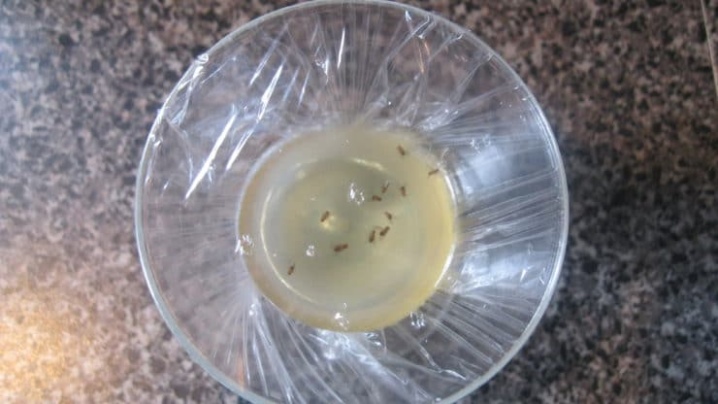
Making homemade sticky tape
Hardware stores and supermarkets sell fly-catching tapes all year round, but when you are not at home, your head is full of other problems. In addition, if flies suddenly decide to wake up in your house in the middle of winter, the store velcro can be expired and dried out. For such uninvited winged guests, you can make a sticky trap with your own hands. Prepare all the necessary materials:
- thick paper that will not get wet from moisture;
- rosin and castor oil - in combination, they make an excellent glue;
- glue brush;
- wire hook or thick thread;
- bait jam.
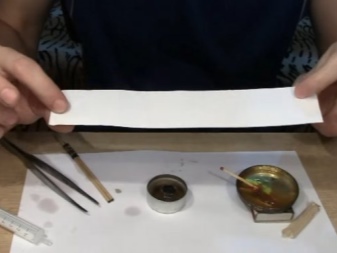
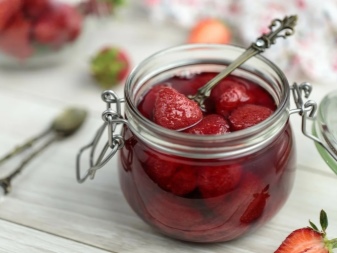
Having prepared all the necessary parts of the trap, you can start creating the tape - for this, follow the simple instructions.
- To mix oil and rosin, prepare a water bath.
- Place 2 tablespoons of castor oil and 1 tablespoon of rosin in a vessel heated with steam.
- Add half a teaspoon of fragrant jam to the solution - the sweet smell from the tape will attract insects.
- Cut thick sheets of paper into strips no more than 4-6 cm wide.
- On one side, poke a small hole in the sheet for a crochet or loop of thread. This is to make the trap easy to hang. You can also use a clothespin or binder.
- Using a brush, carefully apply the adhesive to both sides of each strip, leaving the place of attachment uncovered.
- Hang the finished tapes near the places where flies and midges congregate.
Homemade sticky strips work just as efficiently as finished goods on store shelves. The sticky layer on the paper is pretty strong, so be careful when choosing where to place the trap - hair sticks very easily to the rosin and castor oil solution.
In order not to get caught in your own trap, you need to hang it as high as possible.
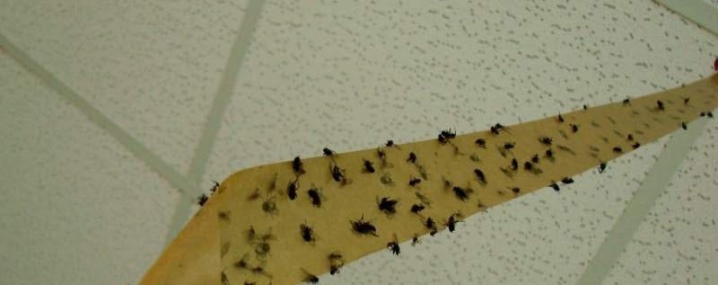
Sometimes people are incredibly resourceful in trying to rid their home of uncomfortable pests. When it becomes unbearable to endure the buzz, some craftsmen make scotch traps. Sticky plastic tapes are glued to chandeliers, cornices, and even to the ceiling. If insects land on such a surface, they are 100% likely to firmly adhere, but the smell of glue does not attract their attention.
The method is an extreme measure when there is no other way out, because the scotch tape cannot keep many flies on itself for a long time - it will peel off and fall. At best, the sticky tape will end up on the floor, at worst on the head, sticking to the hair. Thin scotch tape is not at all suitable for creating a trap: its weight is not enough for it to hang straight, and it twists in spirals, reducing the chances of catching flies.
If you've chosen scotch tape as a trap for winged pests, opt for wide, tight strips. Do not make the pieces of adhesive tape too long (no more than 10-15 cm), otherwise the trap will not support its own weight and will fall. Also, don't forget about the sticky marks that remain from the glue - set the trap in places that will be easy to clean.
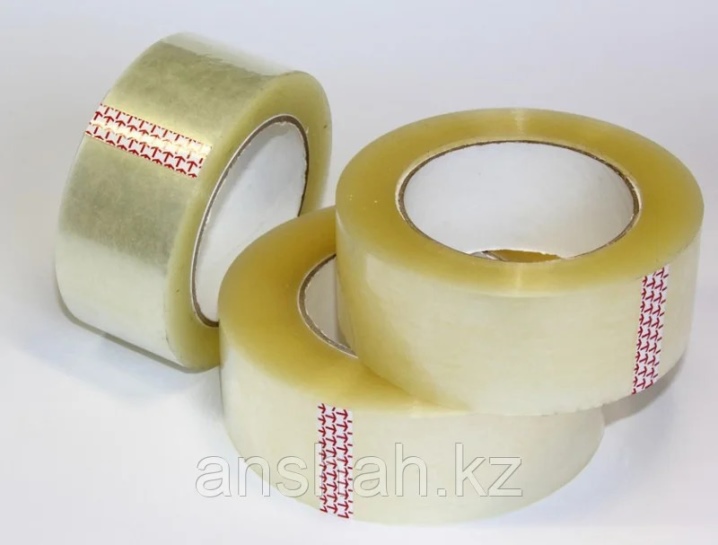
Usage Tips
The effectiveness of fly traps will increase if several different species are used at the same time. When there are a lot of insects, it is best to make several traps of each type and place them in all rooms or distribute them around the garden. You can also catch gadflies, fruit flies and midges at night by equipping the traps with small flashlights or ultraviolet lamps.
If the winged pests have the ability to feed on something outside the trap, the bait will not be of interest to them, so do not leave food in the open. Flies and flies will only become interested in hard-to-find treats when they have no other choice.
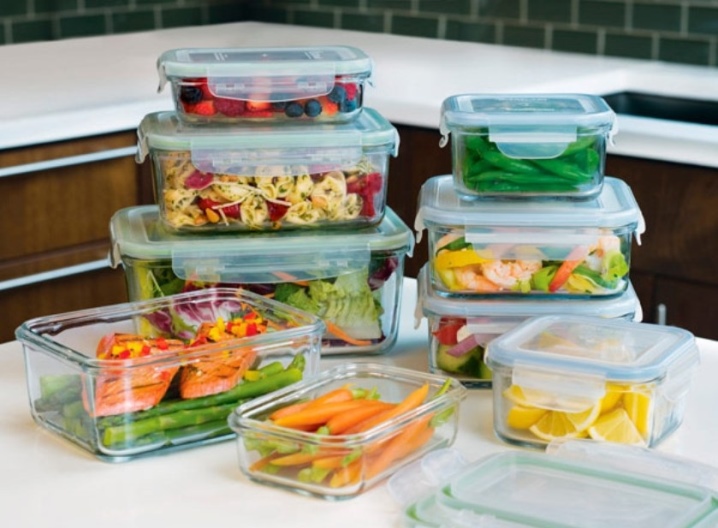
How to make a fly trap with your own hands, see the video.













The comment was sent successfully.